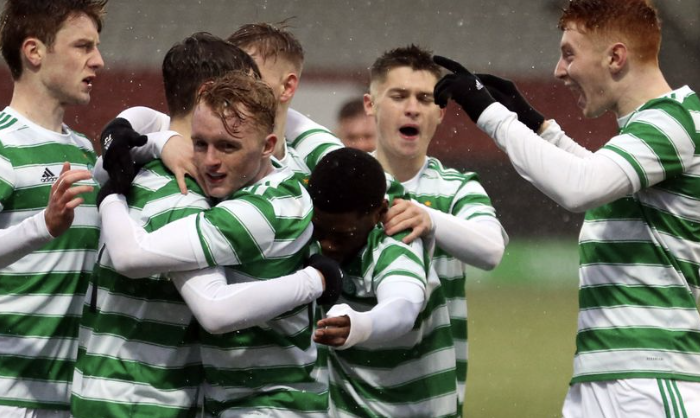A batch of high quality young players coming through from a club’s youth system can generate a golden age of success; the Lisbon Lions, Aberdeen, and Dundee United in the 1980s or more recently, Manchester United’s Wonderkids. Money has always meant that the bigger, wealthier clubs can cherry-pick players to augment that talent to ensure dominance. The explosion in football wealth of the last 30 years has meant that the elite clubs could not only have the cherry-picked best players for key positions, but can buy in high-quality understudies and the Uber rich can buy in elite players as understudies.
This has led to the current system of the Hollywood clubs across Europe being untouchable, but has also made it even more difficult for young players to break into the first team. When fans demand a first-team-ready player at the beginning of every season, and clubs are empowered to deliver it means younger players are left looking up at a glass ceiling that many just cannot break.
Dropping another oven-ready player into your first team, the moment someone goes marginally beyond their sell-by date, requires an everlasting flow of money. This level of nonstop spending is not possible for the clubs outside the Big Five leagues, hence the invention of player trading models. But even that system cannot continue to sustain a flow of first-team players and success. Also, UEFA rules necessitate in European competitions that clubs have some sustainability in their footballing division by requiring a proportion of squads to comprise homegrown players.
After various attempts to get the system right, EPL clubs now, in general, have a process that works for them with first-team pathways via combinations of loans and multi-club ownership. The consequence of this is that there are a sufficient number of high-quality homegrown players to enable their elite clubs to continue to dominate in Europe and to provide Gareth Southgate with one of the best squads in world football. The challenge in Scotland is how to facilitate a replication of that ability to move young kids through to first-team level. At the pinnacle of Scottish football, Celtic have enough funds to buy elite players and below our level the most important thing for clubs is to stay in the top flight. Over the last 25 years, this has resulted in a a reduction in the number of young players that many clubs play, and a cascade of mid-20-year-old, bog standard, steady pros coming in and out of our game.
Celtic and Rangers (with a couple of other clubs dipping their toe in the water) have proposed the B-team system in Scottish football that was seen in other parts of Europe. The idea is to bridge that gap from talented young players playing against other talented young players into playing in a “A man’s game” with the greater physicality. At top clubs such as Celtic, where first-team ready players can be brought in, the level of tolerance among supporters for young players to develop and grow is reduced. It takes an incredibly strong mentality for a young player to accept criticism and continue to try new things to grow their abilities. The rest of Scottish football has been largely against the B-team culture.
This rejection has been driven in part by a dislike of the “elite clubs with money,” and also a rejection of the concept that the elite clubs should be utilising the lower leagues for their player development when many clubs at these levels see their role as community clubs being disrupted.
Finally, their attitude is that if Celtic or others wish their quality young players to play at this level, they could just loan them to these clubs, however, Celtic want these players playing in a similar environment and style to the first team. They want their players to continue to have the best standard coaching, medical science, and sports science, and also the style of play to be in keeping with the first team style. And none of this can be done by just loaning to lower league Scottish clubs.
Celtic had been one of the drivers behind the ability to invest in other clubs and Celtic’s preference would be to have a B team in Scottish football that is allowed to play and compete right up to the level below top flight (the Salzburg/Liefering model). In rejecting this, Celtic have also been looking at the ability to have multi-club ownership. The challenge for Celtic in this is the rule that would allow Celtic to acquire a part ownership in an overseas club would need to be the same rule that allowed overseas or non-Scottish clubs to acquire here.
At a recent fan forum, I asked Michael Nicholson about this and he confirmed that while Celtic are keen to have multi-ownership enabled to allow us to offer our younger players a pathway through to first-team football, to bridge that gap between being a good young player at 17 and 18 and someone who can play regular first-team football at Celtic, we do not want other clubs in the SPFL becoming our competitors funded by elite clubs in the EPL. For example, Burnley are noted to be interested in Dundee. And would we really want the City Group owning, for example, Hibs? The answer to that is we would not.
With the money in football and the ability to buy ready-made first-team players allied to UEFA’s requirement for homegrown players and European squads, an established academy system that brings through footballers has never been more essential. However, the Gulf between being the best at 17 and 18 and being ready to play regularly with players in their mid-twenties who have matured physically and have considerable experience, is huge. But Celtic need to find a way to bridge that gap. The B-team principle is something that Celtic would prefer but is not being promoted or allowed by the rest of the Scottish football. The alternative would be for Celtic to acquire an overseas club and utilise that. And our recent engagement with Admira Wacker illustrates which club that we see as being ideal for us.
Enabling Celtic to have part ownership of Admira Wacker would require a change of rules in Scottish football. But that change of rules that allows us to have part ownership in a club overseas would be the same change of rules that would allow the non-Scottish clubs to come in. The immigration rules around Brexit have resulted in challenges for English premiership clubs and they perceive Scotland and ownership of clubs in Scotland as the route to bring young foreign talent in who don’t quite meet the immigration criteria.
Scottish football is ripe for English Elite Club acquisition. The issue for us is, would the added competition here be a detriment or a benefit, and would the long-term benefits of us being allowed multi-cloud ownership overseas outweigh any challenge we may face by having a greater competition to a domestic dominance here?





